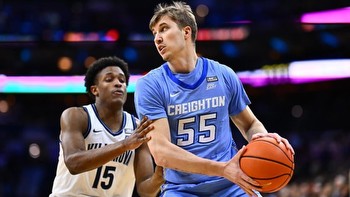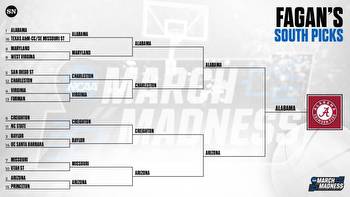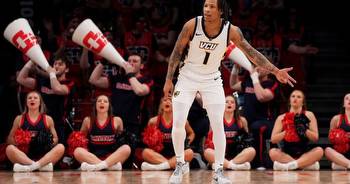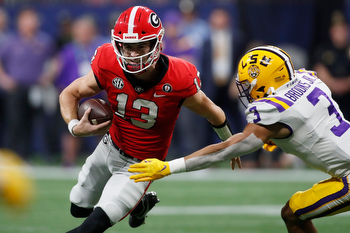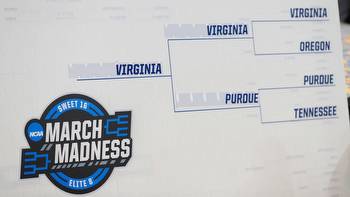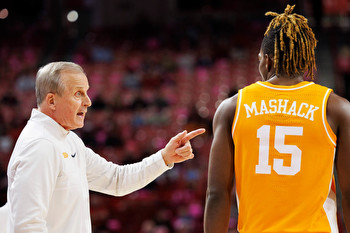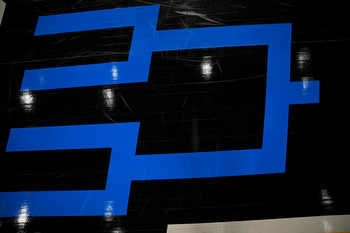Want to win your March Madness bracket? These strategies and tips can help
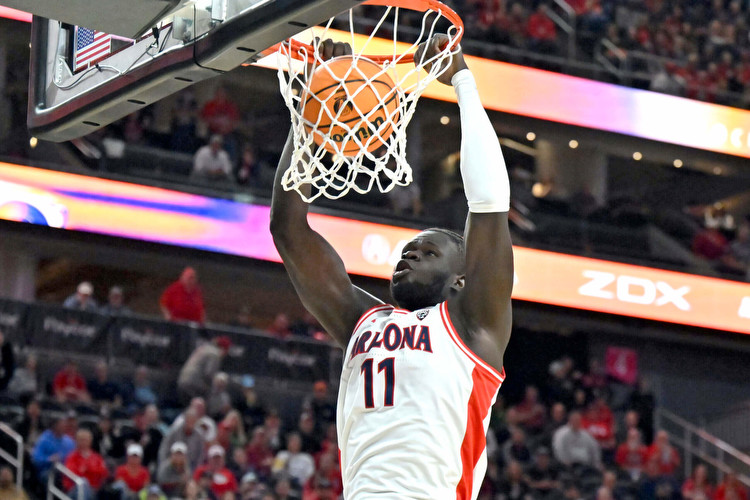
Selection Sunday has come and gone, and the 68-team field is set as the First Four kicks off the beginning of the NCAA Tournament Tuesday night in Dayton, Ohio. It’s time to win your bracket office pool and get bragging rights. This time of year brings out college basketball fans (or maybe non-fans, too) of all ages, as it seems just about everyone wants to fill out a bracket so they have something to pay attention to while pretending to work Thursday and Friday. It doesn’t matter if you’re a fan of the sport and watch a handful of games a week or if you haven’t watched a second of college basketball this season and are just looking for a little action during March Madness. Either way, there are some simple steps to maximize your chances of winning your bracket pool.
My bracket strategy tends to follow my college basketball model, which simulates the entire tournament 1,000,000 times (yes, a projection for every game will be made) but going off which team has the highest win probability in each game isn’t necessarily the best strategy, especially if the pool is quite large (more than 50 people). In my opinion, the size pool you’re entering is the most important thing when determining your bracket strategy. You’ll want to take fewer risks if you are in a smaller pool. You’ll want to increase risk if you’re in a larger pool. Medium-sized pool? Somewhere in the middle.
Remember, the goal isn’t to win these pools while splitting or chopping winnings with many other winners who all picked the 1-seeds to make the Final Four. Instead, you want a unique bracket that gives you the best chance to be the sole winner.
Every pool has its own unique set of rules. Some value upsets more than others, and you need to know that going in when looking at your strategy.
Bracket strategy for large pools (50+ people)
- This is the bracket where you’ll want to have the most upsets. Every year, there seems to be a 1-seed that suffers an early-round upset or a double-digit seed that makes its way to the Elite Eight. This is where you will be able to maximize your expected value. If a 1-seed falls in the second round, most pools will probably have them going further. But if you have them losing in the Sweet 16, you won’t lose as many points as others.
- You’ll want to check public bracket metrics from various sites to see which teams on each seed line are the most popular. These are what I consider possible “fade” teams. For example, if UConn is the most picked No. 1 seed to make the Final Four, you’ll probably want to target the Huskies for an early-round departure. You’ll have the most success finding teams that are least picked, as this maximizes your potential points.
- You’ll also want to check public bracket metrics to see how often a certain 4-seed is picked and compare that to my model’s projection for the game or the betting market. The betting market is the best measure of a true win probability projection for a specific game. If that 4-seed is being picked to move on in 90 percent of brackets but the betting market only gives them a 75 percent chance of winning, that would be a 13-seed worth picking as an upset.
- Lastly, you’ll want to combine the “fade” teams with lower projected odds to make it through each round. So if UConn is the most picked 1-seed but it is by far the favorite to make the Final Four, maybe you’ll want to go to the second most picked 1-seed. There is a little “art” to this process, but for most seed lines, the most picked team won’t be a team you want to be on in large pools.
First-round picks to target in large pools:
Teams to advance to the Sweet 16 in large pools:
- McNeese
- Drake
- Tennessee
- Charleston
- Oregon
- Saint Mary’s
- Nevada
- Colgate
- New Mexico
- UAB
Teams to advance to Final Four in large pools:
- Tennessee
- Arizona
- Saint Mary’s
- Auburn
Championship teams to target in large pools:
- Houston
- Purdue
- Tennessee
- Arizona
Bracket strategy for small pools (<15 people)
- This is the exact opposite of the large pool strategy. In this pool format, you must be cautious and ensure plenty of good teams/high seeds moving deeper into the tournament. Because of the pool size, you don’t need as much variance to come out on top. So picking a 13-seed to make it to the Elite Eight isn’t a sound strategy as it’s unlikely to happen, and you’ll likely be losing out on points because other members of the pool won’t have that team going as far.
- Check the public bracket metrics from various sites, but for a different reason than the large pool strategy. You’ll want to pick the least picked top teams in the tournament. If Arizona is the least picked 2-seed to make the Final Four, they’ll be a team you want to pick going all the way or close to it.
First-round picks to target in small pools:
- Drake
- Mississippi State
- New Mexico
- Nebraska
Teams to advance to the Sweet 16 in small pools:
- Saint Mary’s
- New Mexico
Teams to advance to Final Four in small pools:
Championship teams to target in small pools:
Bracket strategy for medium pools (16-49 people)
- This strategy is somewhere in between the two mentioned above, and how far you sway to one strategy should depend on whether your pool is closer to 15 or 50-plus. Simply put, you’ll need to be more aggressive in a 40-person pool than a 20-person pool.
- Quality over quantity. The upsets you want to target should maximize your chance of winning and not simply hope for variance. Yes, you’ll still need some luck on your side with upsets, but you don’t need as much because you aren’t battling as many participants in the pool.
- Still, check the public bracket metrics from various sites. This is where you’ll find the best-upset candidates when comparing their projected winning percentage by my model or the betting market to how often people select them in their pools.
First-round picks to target in medium pools:
- Drake
- Mississippi State
- Charleston
- New Mexico
- Nebraska
- Samford
Teams to advance to the Sweet 16 in medium pools:
- Drake
- Tennessee
- Oregon
- Saint Mary’s
- Nevada
- New Mexico
Teams to advance to Final Four in medium pools:

